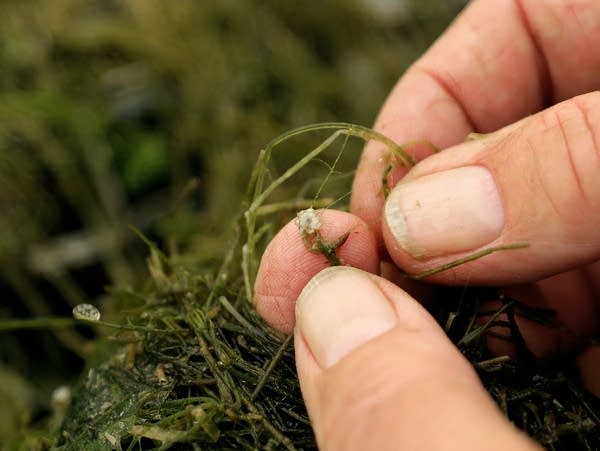Invasive starry stonewort found in first Hubbard County lake

Go Deeper.
Create an account or log in to save stories.
Like this?
Thanks for liking this story! We have added it to a list of your favorite stories.
Volunteers searching Minnesota's lakes last month found an infestation of an invasive algae known as starry stonewort in Wolf Lake in Hubbard County.
The Minnesota Department of Natural Resources confirmed the infestation, which covers about one-third of an acre of the 278-acre lake.
Starry stonewort is a grass-like algae that can form thick mats, making swimming and boating difficult. It's now in 14 Minnesota lakes, including several in nearby Beltrami County.
"It grows fairly tall and it can get pretty dense, so it can interfere with recreation," said Megan Weber, extension educator with the University of Minnesota. "It can get tall enough to start to top out and get in the way of us being able to boat and enjoy the waters that we typically like to."
Turn Up Your Support
MPR News helps you turn down the noise and build shared understanding. Turn up your support for this public resource and keep trusted journalism accessible to all.
The U of M Extension and the Minnesota Aquatic Invasive Species Research Center organized the Aug. 18 search, known as Starry Trek. More than 225 trained volunteers searched 187 Minnesota lakes for invasive species. It's the second year of the event.
"We saw this as a really great opportunity to train people and really get a lot of eyes on the water to really look more critically at what they were bringing in," Weber said.
Starry stonewort has never been successfully eradicated from a Minnesota lake. Weber said researchers are working on methods to control the invader, including pulling it by hand and chemical treatments.
Starry stonewort was first discovered in Minnesota three years ago in Lake Koronis near Paynesville. Earlier this summer, the DNR confirmed infestations in Medicine Lake in the Twin Cities and Pleasant Lake in Wright County.



